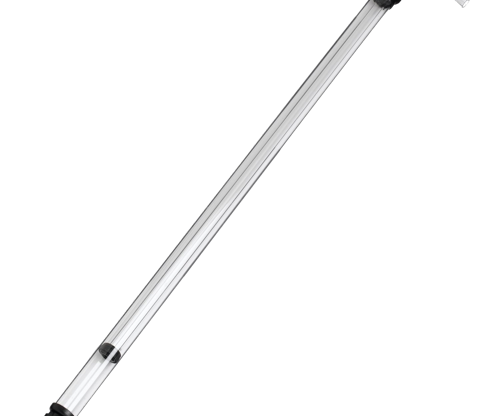What can I say about the auto siphon, except that I should have spent the $20 at the beginning and purchased one. It is that much of an advantage over the basic siphon tube. It is just one of those small purchases that makes your life that much easier in the long run.
Just like a racking cane, you have to have one vessel higher than the other. Then all you have to do is put the manual pump end of the siphon in your pail or carboy, and the tube end in the other vessel. Then raise the racking cane inside the pump cylinder a couple of times until you see the wort come up to the top of the racking cane and over the bend. Gravity does the rest.
There is a plastic cap that is on the end of the auto siphon that will lift it up over the sediment that is on the bottom of the vessel. So make sure you don’t loose it, and keep it clean. It is easily lost, and you will have to buy a compete new auto siphon.
Using the manual siphon tube with a racking cane, you have to create a flow of wort manually by suction or gravity fed. What do I mean by gravity fed? Do you remember the local cable home wine and beer making show I mentioned in an earlier post? The host was full of great tips.
To make a gravity feed with your siphon tubing, fill it up with water. Lower the end of the tube that will be put in the receiving vessel lower than the vessel with the wort. Put your thumbs on each end of the tube to seal it. Put one end in the wort and remove your thumb. The water stays in the tube. lower the other end into the lower vessel and remove your thumb. Bada Bing, it crates a manual flow and the wort gets sucked up out of the upper vessel.
If you don’t want the extra water in your wort, just have a pail or pot on the floor and fill it up with the extra water until the wort comes out then seal the tub up again with your thumb. Then move the siphon tube to the vessel you are filling up and open it up.

